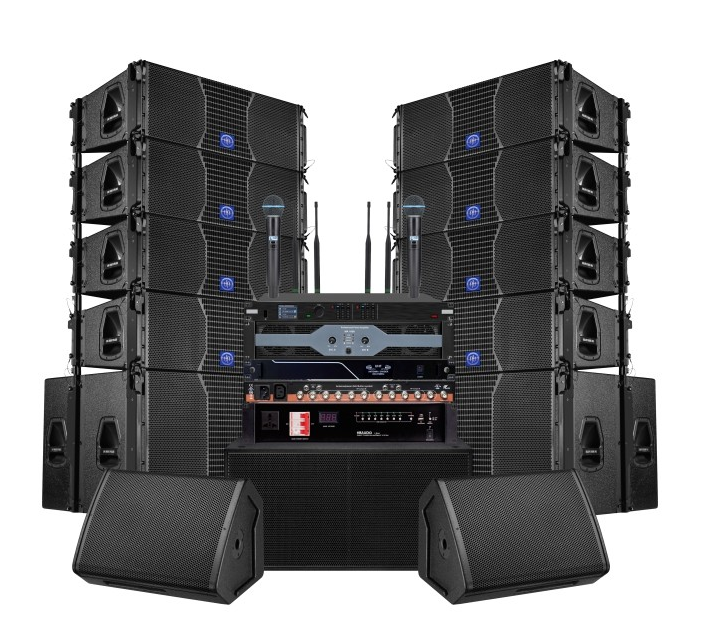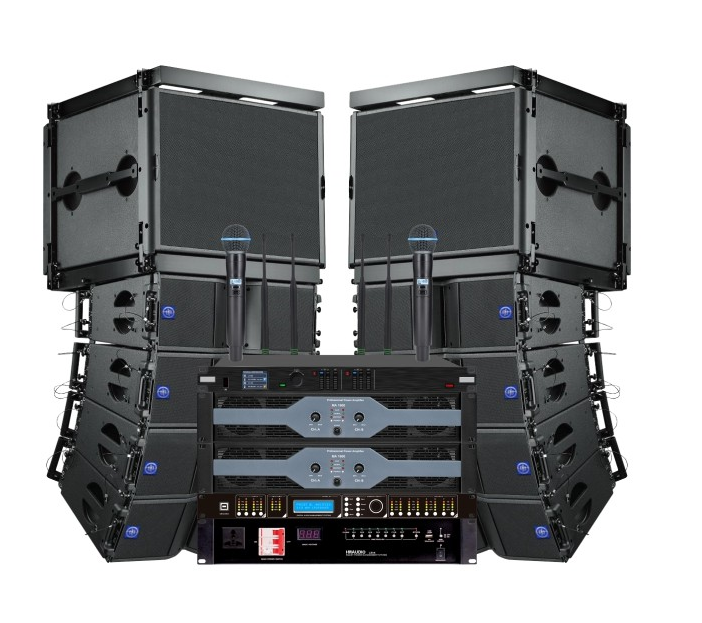Essential Components of Professional Outdoor Sound Systems
When it comes to delivering crystal-clear audio across open spaces, a PA sound system for outdoor events requires careful consideration and strategic planning. The challenges of outdoor acoustics, weather conditions, and varying audience sizes demand specialized equipment and expert setup. Understanding the fundamental elements that contribute to exceptional sound quality can make the difference between a memorable event and a disappointing experience.
Core Elements of Outdoor PA Systems
Power Amplification and Speaker Configuration
The heart of any PA sound system for outdoor events lies in its power amplification capabilities. Professional-grade amplifiers must deliver consistent, clean power to drive speakers effectively across large outdoor spaces. Modern Class D amplifiers offer excellent efficiency and minimal heat generation, making them ideal for extended outdoor use. The speaker configuration should include main arrays for primary coverage, supported by delay towers for larger venues to ensure even sound distribution throughout the audience area.
Strategic speaker placement becomes crucial when dealing with outdoor acoustics. Line array systems have become increasingly popular for outdoor events due to their ability to project sound over longer distances while maintaining clarity and controlling dispersion patterns. These systems can be precisely aimed to minimize unwanted reflections and maximize coverage where it's needed most.
Weather-Resistant Components
Outdoor events expose sound equipment to various environmental challenges. A reliable PA sound system for outdoor events must incorporate weather-resistant components designed to withstand moisture, dust, and temperature fluctuations. This includes sealed speaker enclosures, protected connection points, and weatherproof covers for sensitive electronic components.
High-quality outdoor speakers feature specialized treatments and materials that resist corrosion and degradation from UV exposure. Many manufacturers now offer IP-rated equipment specifically designed for outdoor use, ensuring consistent performance regardless of weather conditions.

Sound Processing and Control Systems
Digital Signal Processing
Modern PA sound systems rely heavily on sophisticated digital signal processing (DSP) to optimize audio quality. DSP units provide essential functions such as equalization, compression, and delay management, allowing sound engineers to compensate for outdoor acoustic challenges. Advanced processing capabilities help eliminate feedback, control frequency response, and maintain consistent sound quality across the entire coverage area.
Integration of mobile control interfaces enables technicians to make real-time adjustments from various locations throughout the venue. This flexibility is particularly valuable for outdoor events where sound characteristics can change dramatically with weather conditions and crowd dynamics.
Mixing Console Selection
The mixing console serves as the command center for the entire PA sound system for outdoor events. Digital mixing consoles offer numerous advantages for outdoor applications, including scene recall capabilities, built-in effects processing, and network connectivity for remote control. Modern consoles also provide extensive routing options and the ability to create custom layer configurations for efficient operation during live events.
Advanced features such as automatic gain compensation and intelligent feedback suppression help maintain optimal sound quality even in challenging outdoor environments. The ability to store and recall specific settings for different types of events streamlines setup procedures and ensures consistent performance.
System Integration and Setup Considerations
Cable Management and Power Distribution
Professional outdoor sound setups require careful attention to cable management and power distribution. High-quality audio cables with proper shielding prevent interference and maintain signal integrity over long runs. Power distribution systems must provide clean, stable power to all components while incorporating appropriate surge protection and grounding schemes.
Implementing redundant power sources and backup systems ensures uninterrupted operation during critical events. Cable routing should account for audience traffic patterns and incorporate appropriate protection against tripping hazards and environmental exposure.
System Optimization and Testing
Proper system optimization involves comprehensive testing and measurement procedures to ensure optimal performance. Audio analysis tools help identify potential issues and verify system coverage patterns. Regular testing of all components under various conditions helps prevent unexpected problems during live events.
Environmental factors such as temperature, humidity, and wind conditions can significantly impact sound propagation. Understanding these influences and making appropriate adjustments is crucial for maintaining consistent audio quality throughout outdoor performances.
Frequently Asked Questions
How Much Power Is Required for an Outdoor PA System?
The power requirements for a PA sound system for outdoor events depend on various factors, including venue size, audience capacity, and program material. Generally, a system should provide 10-15 watts per person for speech and light music, while full-range music reproduction may require 20-30 watts per person. Always factor in headroom for dynamic peaks and environmental conditions.
What Type of Speakers Work Best for Outdoor Events?
Line array systems and high-output point source speakers designed specifically for outdoor use typically provide the best results. These speakers should feature weather-resistant construction, efficient drivers, and controlled dispersion patterns to minimize environmental impact on sound quality.
How Do Weather Conditions Affect Outdoor Sound Systems?
Weather conditions can significantly impact outdoor sound performance. Wind can alter sound propagation patterns, while temperature and humidity affect air density and sound absorption. Professional PA systems include features to compensate for these variables and maintain consistent performance across varying conditions.

